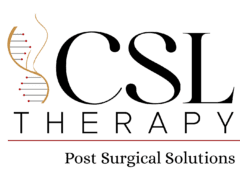What Is Incisional Sciences Anyways?

author: Chanelle Davis
CSL Therapy Incisional Agency Officer
8/6/2023

Everywhere you turn, someone seems to have something say about Incisional treatments. But often, people are having varying conversations about the topic from different angles. We want to pause and point out how often loud information is usually the most incorrect– what’s shown on social media, isn’t what Incisional Sciences actually is, believes or teaches. Keeping in mind when people pay to learn correct techniques, they don’t usually share those techniques for free online– CSL Therapy is happy to start clearing the air around Incisional treatments. Supported by one of our industry favs, Dr. Hoyas— one of our Medical Council members, Guadalupe Beckker, had some time to catch up with him during his most recent training in Colombia– is a believer in Incisional treatments, this article should shine some light on CSL Therapy Incisional Sciences modality.
In this article:
- Educate the readers about the first modality of CSL Therapy, which is Incisional Drainage
- Emphasize the importance of qualified professionals in providing Incisional Drainage
Did you know there’s 3 modalities to CSL Therapy?
- Incisional Drainage
- Post Op Induration
- Body Contouring
We are going to get into the first modality of recovery in CSL Therapy, which is, you guessed it!
Incisional Drainage and the science behind the treatment!

Incisional Drainage is… working on clients with open incisions from day 1 to day 7 post-op. Incisonal drainage treatments are performed the first week after a client has plastic surgery.
Treatments are characterized with light strokes going toward the open incision area and or drainage tubes, to dislodge fluid from congested areas to focus on expelling fluid.
Times Have Changed

Tumescent fluid gets trapped within client tissue layers during surgery. The weight of this fluid is heavier than that of lymph, water, and blood. Over the years, the canvas (the human body) has changed drastically, yielding traditional massage treatments not only outdated, but typically harmful. The heavy weight of tumescent sits on the challenged lymphatic system– most of which gets destroyed during surgery, and places harmful pressure on client’s lymphatic valves. Incisional drainage focuses on removing pressure, decreasing volume and localized swelling, and encouraging circulation while a client still has open, active incisions.
Factors that have changed the canvas over the years:
(this is not an exhaustive list)
- Quality of food (we consume more GMOs and processed foods than ever before)
- Less physical activity
- Unhealthy BMI
- Higher stress levels
- Higher salt intakes, lower water intake
- Compacted colons
- Weakened immune systems
Assessing clients is very important, as not everyone needs or can handle this treatment. Clients that are closer to ideal candidacy with low BMI and a healthy pre surgical baseline may not need this treatment.
Treatment application
The provider manually redirects lymph and T-Interstitium fluid towards clients incisions and/or drains. Note: This would be the only time the provider would use downward strokes; postoperative treatments are indicated by upward strokes towards the clavicular nodes and the axillary.
Sessions usually last between 45-60min long. The strokes are light, and superficial, as the lymphatic system is located IN the skin; using harsh heavy pressure is unnecessary and introduces and extra layer of trauma.
Some of the procedures that would typically need incisonal drainage are:
- Any kind of liposuction
- Tummy Tuck
- Brazilian Butt Lift (BBL)
- Mommy Makeover
This treatment should be provided by professionals who have taken extended training on how to handle clients from day 1 to day 7 after plastic surgery. The treatment style should not be performed past day 7.
Who should be providing this treatment?
The professionals who are able to provide this service with the proper knowledge are:
Nurses, Phlebotomist, Massage Therapist, Estheticians, Dermatologist and those who are CSL trained in incisional science. This treatment is optional, if the provider or the client isn’t comfortable with the service, they can either provide MLD or wait until the start of week 2 to start the second phase of recovery– PostOp-indur[ation]. Or refer them to someone else to provide incisional drainage.
Intentions of this modality are to stimulate fluid movement and decrease the discomfort from increased swelling and decreased circulation. During the sessions, clients often drift off to sleep as the treatment is soothing and provides levels of comfort. When done properly, clients express a heightened amount of gratitude and feelings of joy. Providers should always use proper precaution and PPE to avoid infection, even though the client will likely be on antibiotics.
A well trained professional would be equipped with proper knowledge to assist with questions the client may have regarding recovery.
— Chanelle Davis, Board Certified LMT-CDT, STNA, LE, CSL Therapy Incisional Science Officer
